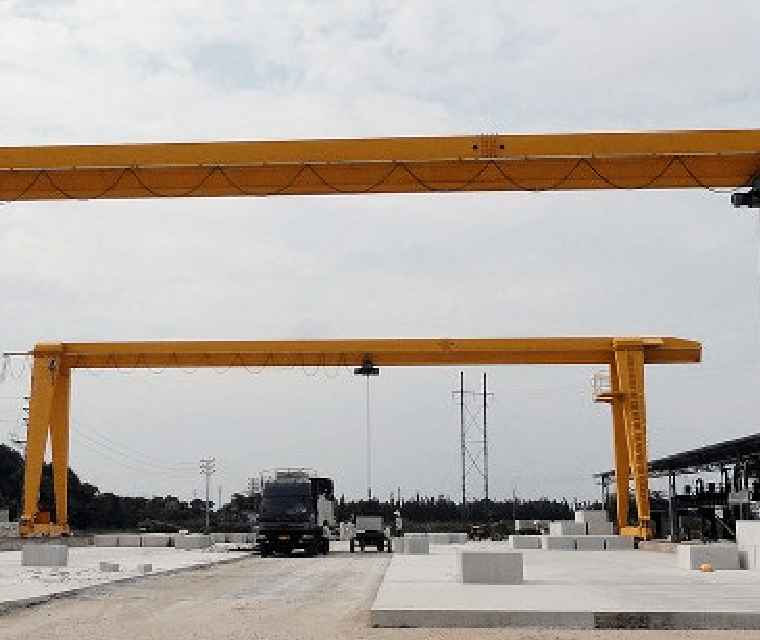Details You Need To Have Knowledge Of Electric Chain Hoists

In a factory setting, Electrical Chain Hoists certainly are a must-have. Suitable for providing vertical lifts, electric chain hoists are simple and simple to work. This may cause them a beautiful alternative for companies.

However, what's less than easy may be the task of selecting the proper hoist for your needs. The marketplace happens to be flooded which has a great number of products, most of which are subpar offerings. Wonderful manufacturers claiming the top spot, it may become challenging to choose the right choice.
That's why, to make certain that you don't go overboard, we've gone ahead and compiled this entire guide to choosing electric chain hoists to use. After you have the guide below, you have little difficulty understanding which product you need to purchase.
But let's move on at the start and clear the air on the an Electric Chain Hoist is.
Precisely what is an Electric Chain Hoist?
Basically, an electric chain hoist is often a device that's useful for vertically lifting and lowering any materials. The hoist consists of an auto using a brake, Gearbox, Load Chain wheel as well as a controller, that are employed to control the motions from the system. The lifting element used may be the Alloy Steel Chain.
Most of these hoists are great in factories and machine shops, which require fast lifting and loading of items.
Considerations when selecting Electric Chain Hoists
Deciding on the best chain hoist is probably the essential prerequisites for the safe and efficient workshop environment. Listed below are some of the key factors that needs to be taken into account when selecting the best product.
The load from the load: This is the first and most important aspect you need to consider in choosing electric chain hoists. The stress that you'll be lifting determine the sort of hoist that you need to buy. Generally speaking of thumb, for under ten plenty of lifting capacity, a series hoist is preferred. However, for lifting greater weights, a wire hoist works. But this doesn't hold rich in lifting height. So, depending on your industry requirements and needs, selecting hoists vary.
Application Requirement: When you've determined the stress type, you need to find out the approval which you will end up putting the hoist. Think about this: Will you apply it product assembly? In that case, then extreme precision is a prerequisite. Also essential is usually to know you may be using any devices below the hook. Or what are your duty cycles?
Lifting Speed: The subsequent factor to consider could be the lifting speed, which should be carefully calibrated for that proper loading and unloading from the materials being lifted.
The task Environment: Perhaps more vital than lift speed may be the environment where your hoist will be used. Factory environments could be abrasive for machinery, and it's important to comprehend the impact that this workplace may have on your equipment. As an example, when the hoist is employed in extremely high-temperature environments, this might cause gearbox leakage and related hoist malfunctions. Similarly, shallow temperatures may cause cracks to build up or internal components to freeze. Setting where there are extreme temperature swings may also be detrimental on the operation of your respective hoist. Frequent temperature changes can lead to electrical short circuits and associated equipment malfunction.
The work Cycle: What this means is enough time that your hoist will probably be used. The amount of hours how the hoist will operate at a time make a difference the longevity of the device. The duration of the job cycle is important as electrical hoists have to dissipate heat from the motors. This means they should be given sufficient downtime to cool down the and recover. Otherwise, you could possibly just be inviting equipment malfunctions.
The peak Of The Lift: The height that you should lift the strain also plays an essential part from the selection of the hoist. Usually, electric chain hoists have a container when the excess chain is spooled. Naturally, the better the height, the more time the chain, this also means a greater chain container. Or even designed properly, a too-large container could actually behave as a blockage for the load being lifted. An Electric Chain hoist is really a preferred choice for higher lifting height, e.g. windmill hoist for turbine maintenance.
The electricity Source: The level of hoist you need will likely determine the power supply you will want to use. For low-duty cycle applications, a single-phase hoist is sufficient. If, however, you need extremely high-duty cycles, then it is biggest score a three-phase hoist. This will ensure that you plenty of power to the machine's operation.
Warranty: So far as machines go, an electrical hoist is amongst the ones that undergo the usual deterioration. Hence, to stop repairs, you must get a creation that has attractive warranty features. Make certain that hoist warranty covers all essential parts and labour. Usually, labour will cost you more than parts, so it is best if the warranty includes both included.
Safety Features: At the conclusion of the afternoon, an electric powered hoist is often a machine. As well as in any setting where electrical tools are used, accidents can occur. This is exactly why, when choosing the hoist, ensure they have all safety features, such as load limiters. Equally important are self-adjusting brakes and thermal overload protection.
For additional information about Electric Wire Rope Hoist take a look at our new site
